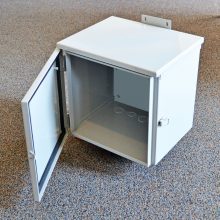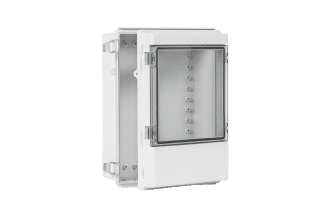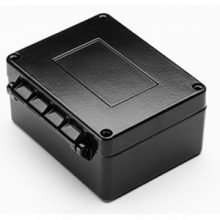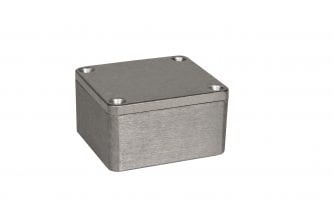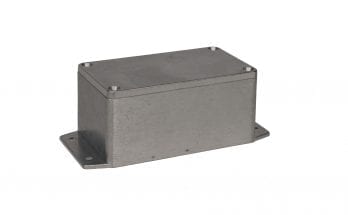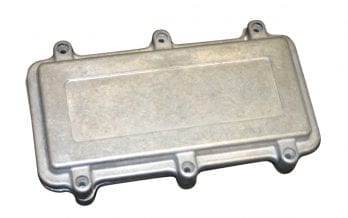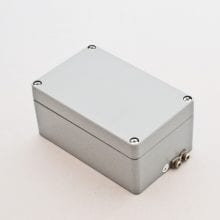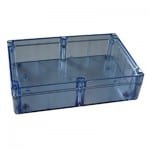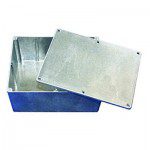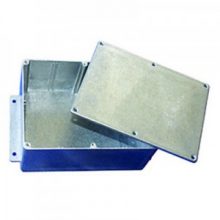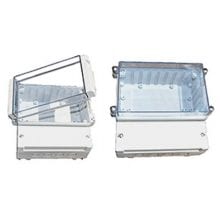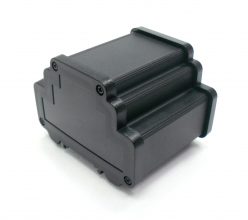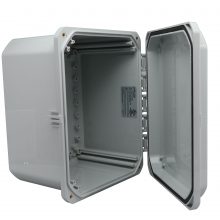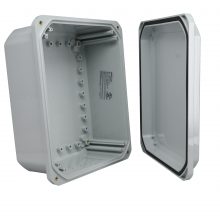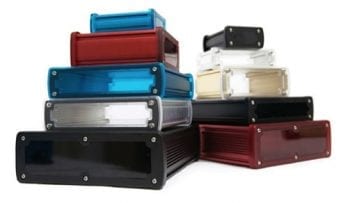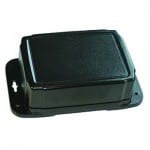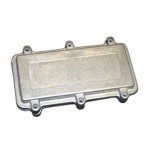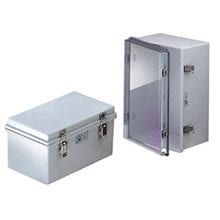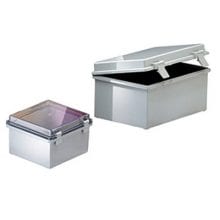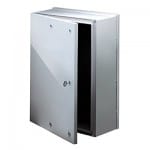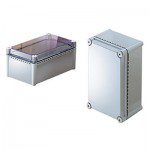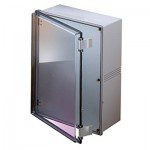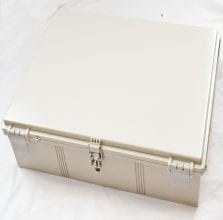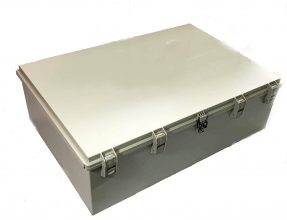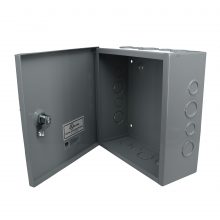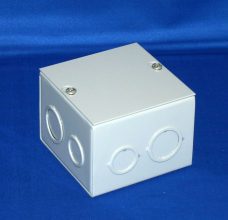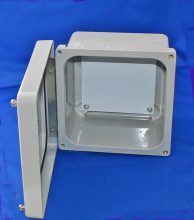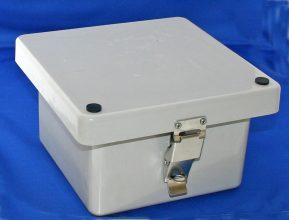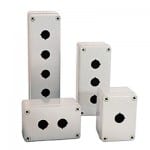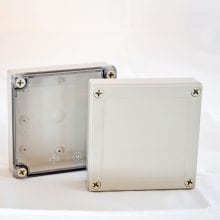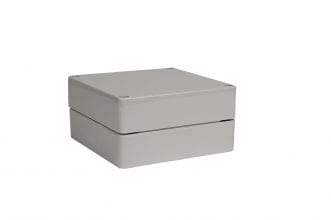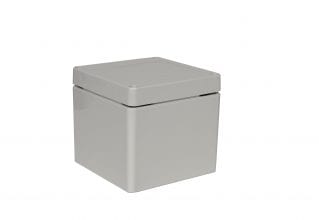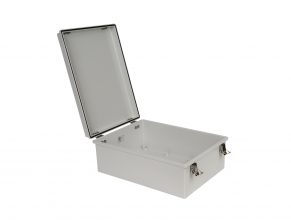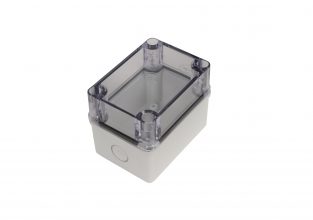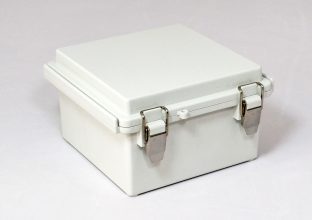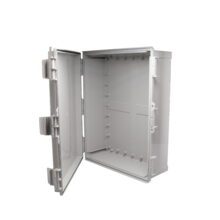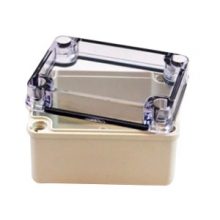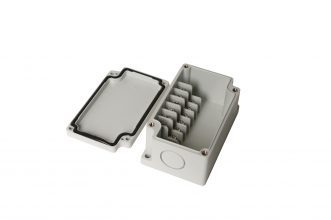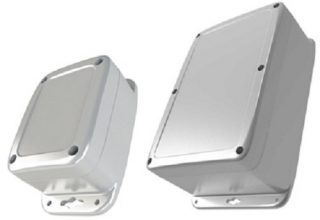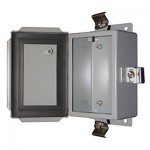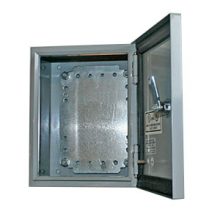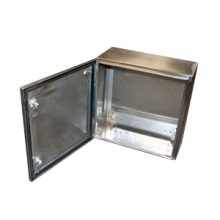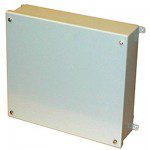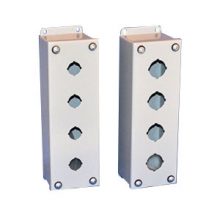Why enclosures have NEMA and IP ratings
Terms like “waterproof” and “sealed” are ambiguous. They are not very helpful to people selecting an enclosure. For example, design engineers need to know “exactly how waterproof?” Does the enclosure protect against dripping water only or against complete submersion? Designers need a way to be sure that moisture, dust and other contaminants will not damage the electronic and electrical components of their designs.
That’s why electrical enclosures are rated based on their ability to withstand a varying degree of environmental elements, including dust, water, and ice.
To provide environmental protection, enclosures are tightly sealed using gaskets and often seam welding and other techniques which increases the cost compared to enclosures that are not sealed. Engineers should consider specifying the lowest cost enclosure that will do the job. An electrical junction box used within a building does not need the same level of protection as an outdoor enclosure.
Upon request, the enclosure manufacturer should be able to provide documentation of testing that proves an enclosure meets a particular rating. Because of the time and cost of testing, manufacturers do not always pursue both NEMA ratings and IP ratings for all of their enclosures. However, when you understand the rating systems, you may be confident that a NEMA-rated enclosure will meet the requirements of a a similar level of protection with an IP-rated enclosure and vice versa.
Comparison of IP and NEMA ratings
Both NEMA ratings and IP ratings work equally well at describing the level of environmental protection an enclosure will provide. For equipment and design projects intended to be used in the United States, NEMA ratings have been preferred. Because many manufacturers export to Europe and other countries, North American engineers are also comfortable using IP ratings.
The standard format for an IP rating is “IP’ followed by two numbers which designate the level of protection. The first digit, which ranges from 1-6, specifies the level of protection from solids, and the second digit, which ranges from 1-8, specifies the level of protection from water.
The higher the number is, the greater the level of protection. For instance, an enclosure with a rating of IP10 would offer less protection than an enclosure that is rated at IP54.
The following table summarizes the various IP number designations
| First Number | Protection From Solid Objects | Second Number | Protection From Water |
|---|
| 0 | No Protection | 0 | No Protection |
| 1 | Protected from solid objects over 50mm | 1 | Protected from vertically falling drops of water |
| 2 | Protected from solid objects over 12mm | 2 | Protected from direct sprays of water up to 15 degrees from vertical |
| 3 | Protected from solid objects over 2.5mm | 3 | Protected from direct sprays of water up to 60 degrees from vertical |
| 4 | Protected from solid objects over 1mm | 4 | Protected against sprays from all directions – limited ingress permitted |
| 5 | Protected from dust-limited ingress | 5 | Protected from low pressure jets of water from all directions – limited ingress permitted |
| 6 | Totally protected from dust | 6 | Protected against strong jets of water – limited ingress permitted |
| NA | | 7 | Protected from the effects of temporary immersion between 15cm and 1m |
| NA | | 8 | Protected against long periods of immersion under pressure |
NEMA vs IP Ratings Table
| NEMA | IP |
|---|
| 1 | 10 |
| 2 | 11 |
| 3 | 54 |
| 3r | 14 |
| 3s | 54 |
| 4 and 4x | 55 |
| 5 | 52 |
| 6 and 6p | 67 |
| 12 and 12k | 52 |
| 13 | 54 |
There is not a direct correlation between NEMA ratings and IP ratings, as the two systems are based on a different set of variables. However, the table above shows an approximate cross reference that can be used to help determine the IP number that meets or exceeds a particular NEMA rating.
One thing that’s confusing about this matchup is that, unlike IP ratings, NEMA rating protection does not always increase with higher numbers. For instance, NEMA 12 provides less protection than NEMA 4. Another confusing point is that some NEMA ratings include additional letters to signify special qualities. A good example is NEMA 4X: the X indicates corrosion resistance.
Understanding NEMA Protection Ratings
Bud’s NBB Series enclosures are rated NEMA 4X. They offer protection against dust and hose directed water, as would be experienced during factory equipment washdown. As the boxes are made of plastic, they offer inherent corrosion protection.
These box enclosures are also rated IP66, ensuring protection against high pressure water and total protection against dust.
The test for IP66 is three minutes under a water jet at 100 kPA/100 liters per minute at a distance of a meter. The test for NEMA 4 is hose-directed water at 31 kPA/240 liters per minute from a 1-inch hose at a distance of three meters.
You can see how the tests are very similar yet not equivalent. Rather than getting caught up in the small differences between standards, specifiers should think about the conditions in which the enclosure will be used and select an appropriate rating, either NEMA or IP.
See our most popular blog posts on NEMA Enclosures: https://www.budind.com/blog/category/nema-boxes/

